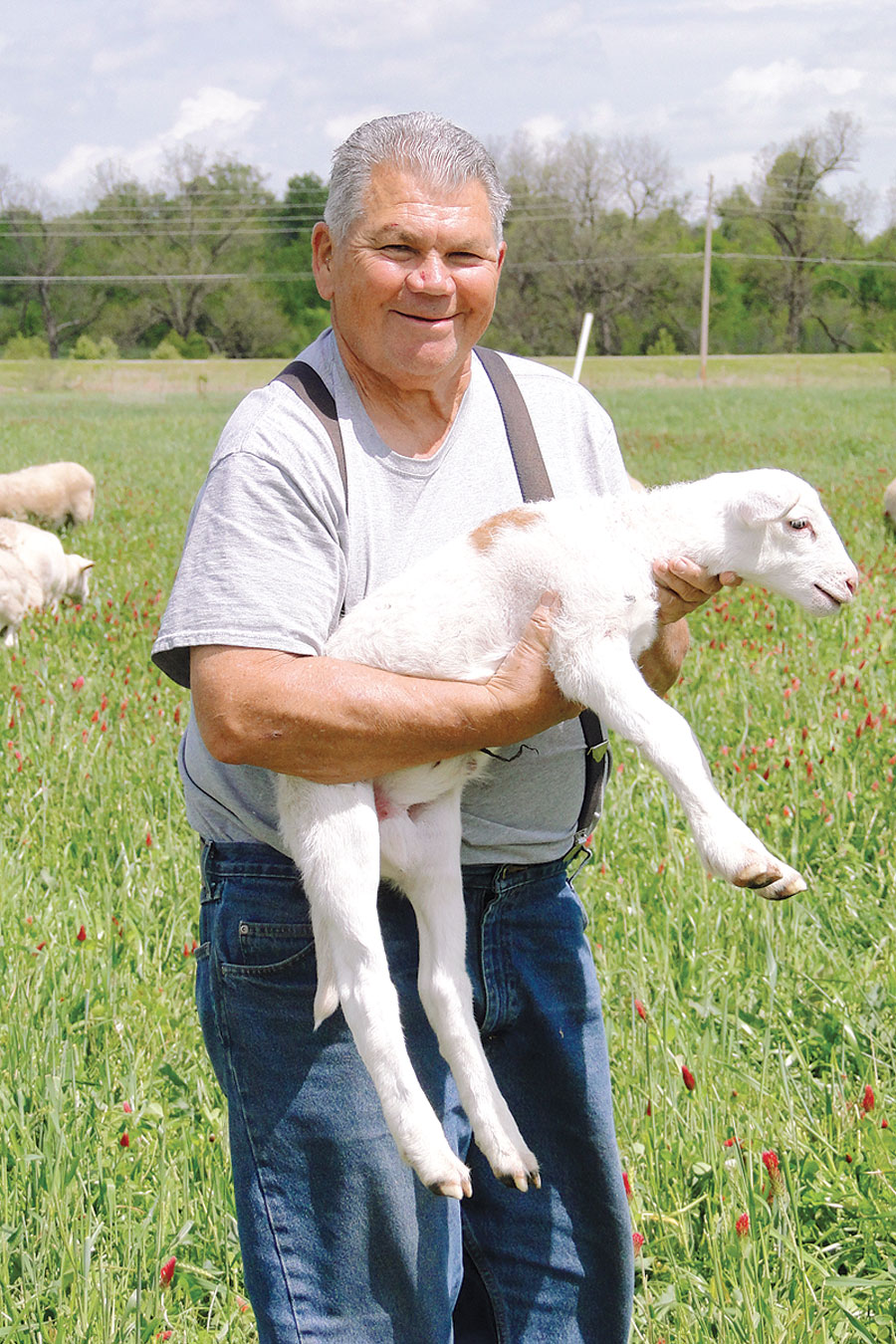 Ron Hall of Owasso, Okla., fondly recalls being 8 years old in California and picking cotton with a gunnysack for his grandfather, John, who always placed his hand on the scale so Ron would be paid for an extra 10 to 15 pounds.
Ron Hall of Owasso, Okla., fondly recalls being 8 years old in California and picking cotton with a gunnysack for his grandfather, John, who always placed his hand on the scale so Ron would be paid for an extra 10 to 15 pounds.
Ron still uses that scale for weighing lambs.
Soon after they married 50 years ago, Ron and Jeanette moved to Oklahoma, where his father, Robert, had already returned to his own birthplace and where Ron had spent 2 ½ years in his teens.
The couple built their first home and lived there 30 years, rasing their daughter Michelle and son Brian, who have thus far given the couple five grandchildren and one great-grandchild.
Brian is heavily involved in the family farm and will take over one day.
Ron and Jeanette have 70 very busy acres on the outskirts of Owasso on which they raise sheep and a few cattle, with heritage pigs coming in the near future as Ron moves toward multi-species grazing. Sheep, however, are the main focus and were selected because Ron loved border collies and found joy in training them.
Further, he felt cattle were too big and goats too ornery. Sheep were not only more manageable in term of size and temperament, hair sheep did not require shearing, a service not available in the area. Though their hair looks like wool, it is not and is shed naturally rather than needing shearing like the wool of wool and meat sheep. Ron raises sheep to sell lambs, almost entirely two ethnic groups.
Early on Ron sold his lambs at auction, but people kept asking to buy and slaughter them at the farm which meant no traveling or commission costs. Word spread quickly and his business has thrived ever since. One problem is his customers want to buy lambs 10 to 15 pounds smaller than he wants to sell them because the extra pounds cost him nothing and would make you more money. Consequently, he agrees to sell the lambs at the lower weight, but charges his customers a premium for the lost poundage, something they are very willing to do.
Ron explained six ewes are far more productive on the same amount of land as one cow. The sheep lamb three times in two years, producing an average of four and a half lambs in that time compared producing to two calves for cattle. Sheep are economical to raise because they forage and love broadleaf weeds. Ron also uses a no till process and very little fertilizer, which allows microbes to naturally fertilize the land. The cycle starts with the smallest, bacteria, that are partially composed of nitrogen and phosphorus and consumed by fungus, the next size in microbes. The fungus in turn releases the bacteria’s nitrogen and phosphorus back into the soil. In addition, protozoa, next on the microbe size scale, eat the fungus and release even more of the nitrogen and phosphorus into the soil in addition to other nutrients. Finally, when the soil is left undisturbed earthworms flourish with three to six worms in every shovelful of soil. Their life process includes consuming dirt and excreting the nutrients, making the soil more fertile while aerating it. According to Ron, 750,000 worms exist in one acre of non-tilled, healthy soil.
Ron seeds in the late summer or very early fall with a changing regimen of seeds. Last year he spread barley, wheat and crimson clover. If the weather cooperates, he has excellent forage for fall, winter and early spring so little hay or grain is needed during the winter. Further, he harvests the hay he needs, which is composed of the exact forage needed for his sheep.
“You can increase density by spending a lot of money but I have found sustainable farming like I practice provides the most profit because you have the least financial investment,” Ron said.
Another cost-saving measure is using clean out seed, which is the leftovers from the commercial bagging process. He uses clean out seed of various types, including the clover sereca lespedeza, which was developed by the U.S. Department of Agriculture for soil conservation and which contains tannin, a substance that kills worms and therefore allows for individual animal worming only as needed. One disadvantage, according to many, is that clean out seeds also contain weed seeds. However, since the sheep love weeds, their inclusion does not present a problem.
Four years ago, Ron further improved his land by installing an irrigation system.
“Here rain stops faster than you can say Rumpelstiltskin, and I need to be ready,” Ron said.
The system includes 2,400 feet of PVC pipe drawing water from a pond he recently constructed. Six “T” connections are spread throughout his land. When needed, he hooks a portable irrigator to his Gator that is 150 feet wide and irrigates 550 forward feet in one pass. Ron also drained a wetland and planted Sudan grass that grew 6-feet tall and less than four weeks while he was recuperating from knee surgery. Finally, when an apartment complex was recently built nearby, the builders offered to spread load after load of topsoil on his land in order to dispose of it. While that free topsoil contained some hated thistle seeds which are now sprouting, in time those thistles will be gone by spot spraying.
“You can make more money than you think on a small piece of land especially if you barter and trade for the things you need,” Ron said.







